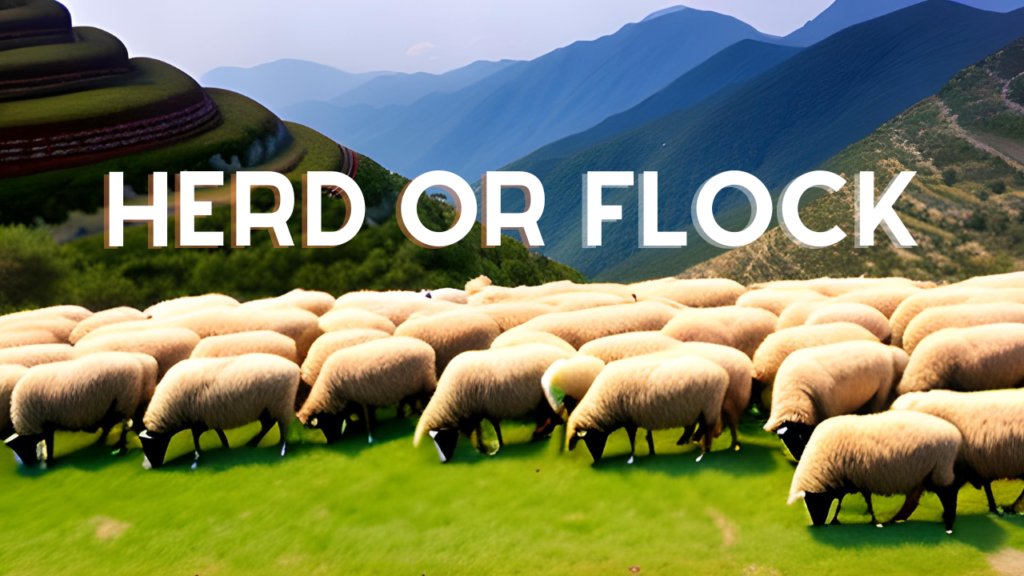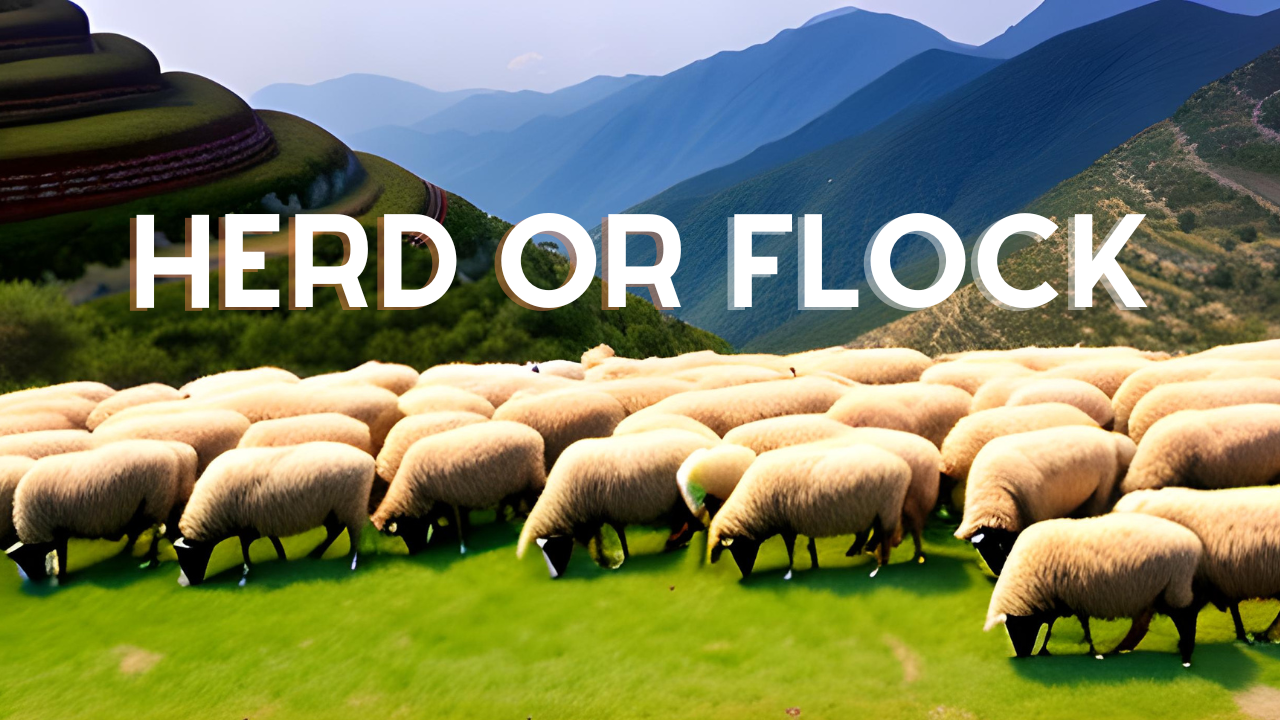We use affiliate links to run our site. When you buy through links on our site, we may earn an affiliate commission, without any added cost to you. Learn more
There are many words used to describe a group of animals in nature, such as flock, herd, flight, group, or drove. While these words are sometimes used interchangeably, each has a distinct meaning, especially when it comes to sheep.
Sheep are fascinating animals, and whether you’re a farmer or simply interested in animal behavior, understanding the differences between a herd and a flock can be beneficial.
Did you know that there are subtle yet significant distinctions between these two terms when it comes to sheep? In this post, we will delve into the details of herd vs flock of sheep and explore how these terms apply to their social behavior, movement patterns, and more.
By the end of this article, you’ll have a deeper understanding of these ovine creatures and be able to impress your friends with your newfound knowledge!
Flocking behavior
According to Science Direct, flocking is a behavior exhibited by mammals, fish, and insects. The main benefit of flocking is better protection from predators.
In a group, animals can better detect predator attempts, and there is the added benefit that the effects of predators are diluted.
Herd vs. Flock

When it comes to sheep, the words ‘herd’ and ‘flock’ are often used interchangeably, but they are not synonyms. The word ‘herd’ is a collective noun that can also be used as a verb, which can complicate the issue.
A ‘flock’ refers to a relatively small group of sheep. If the group of sheep is larger, the sheep may be called a mob or a band. ‘Herd’ is a shortened variation of the word ‘shepherd,’ which is a sheepherder.
The sheepherder keeps the sheep united by ‘herding’ them. Therefore, in actuality, there is no such thing as a ‘herd’ of sheep; they are a flock.
Sheepherding
The shepherd is the one who watches over and maintains the animals, keeping the sheep together in their flock. They do this by sheepherding or herding the sheep together, which is likely how and why a flock of sheep is often called a ‘herd.’
While sheepherding and sheep as a resource, in general, are on the decline due to the cattle industry and the evolution of synthetic fibers, you are more likely to find flocks of sheep than bands these days.
Frequently Asked Questions
What is a herd of sheep?
There is no such thing as a herd of sheep. The term ‘herd’ is probably used because of the ‘sheepherder’ or ‘shepherd’ who watches over the sheep, returning stray ones to the flock.
What do you call a sheep group?
A sheep group is commonly referred to as a flock. A larger gathering of sheep may be called a mob or a band.
What is a group of other animals called?
A group of geese is called a ‘gaggle,’ and a group of birds is called a flock. A group of cows or bulls is called a herd.
What is mutton?
Mutton is the meat from a fully grown sheep. It is usually darker and has a stronger flavor than lamb meat.
Conclusion
The main difference between a herd and a flock of sheep is the size of the group. A group of fewer than five sheep is called a flock, while a larger group may be called a mob or a band.
The term ‘herd’ is commonly used to describe the act of sheepherding, which involves keeping the sheep together in their flock.
While there is no such thing as a herd of sheep, the term is still used to describe the act of caring for them and gathering them back together in their flock.
We hope this article has helped clarify the differences between the two and provided valuable insights into their behavior.
If you enjoyed reading this post, we encourage you to share it with your friends and family who might find it interesting. Additionally, don’t forget to explore other articles on our site for more informative content.
Amazon and the Amazon logo are trademarks of Amazon.com, Inc, or its affiliates.
